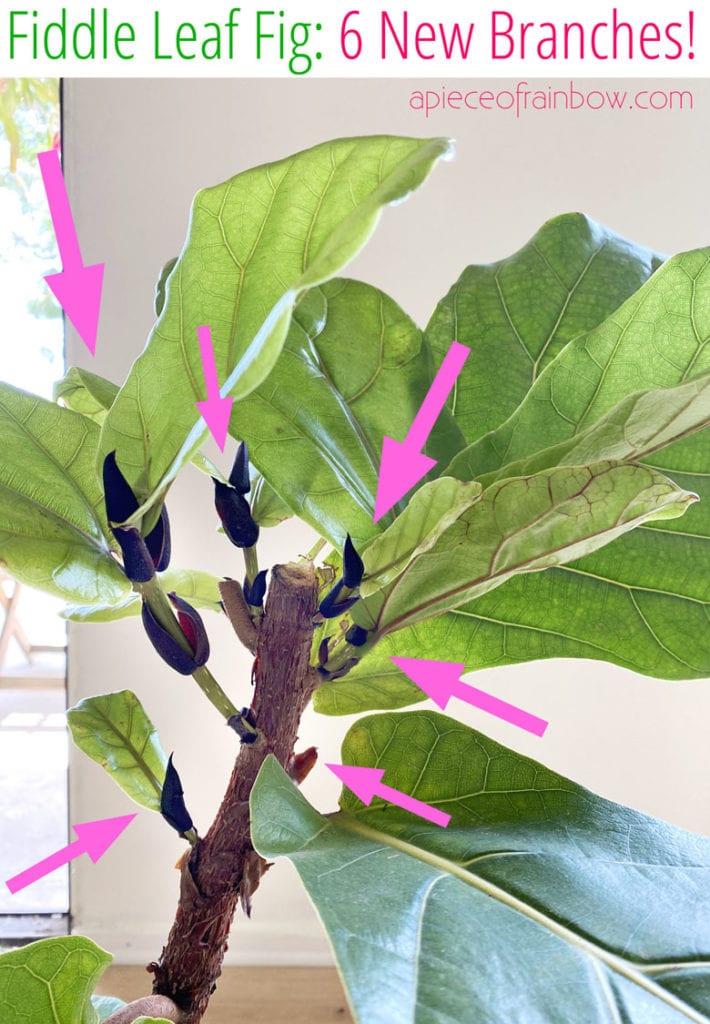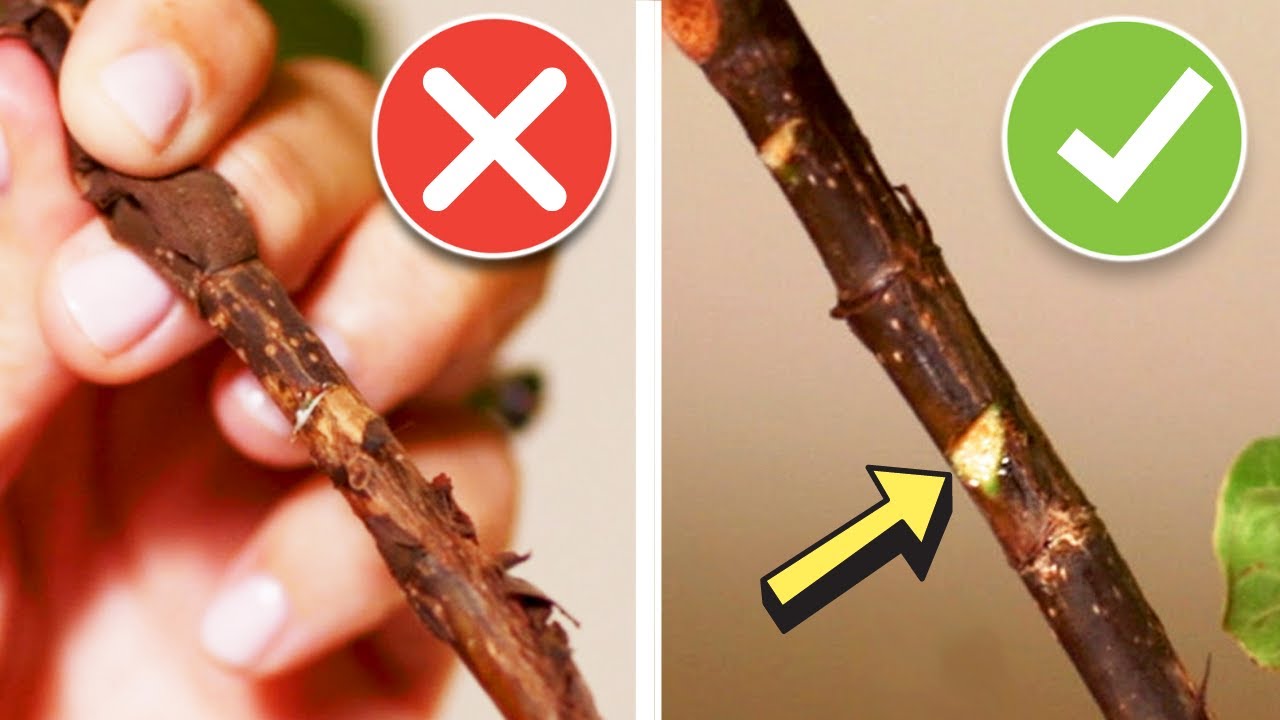To notch a fiddle leaf fig, make small cuts near the leaf nodes to promote branching. Fiddle leaf figs (Ficus lyrata) are popular indoor plants known for their large, glossy leaves.
Notching is a technique used to encourage more compact growth and promote the development of lateral branches. By making small incisions just above the leaf nodes, you can stimulate the production of hormones that signal the plant to produce new growth.
This technique is particularly useful for fiddle leaf figs that have become tall and leggy or have sparse foliage. We will guide you on how to properly notch a fiddle leaf fig to help you achieve a fuller and more attractive plant. So, let’s get started and give your fiddle leaf fig a boost of growth!

Credit: www.apieceofrainbow.com
Understanding The Basics Of Notching A Fiddle Leaf Fig
Notching is an important technique for fiddle leaf figs. It involves making a small notch on the stem, encouraging the plant to grow new branches. This helps the fig to become bushier and more aesthetically pleasing. Notching also allows more light to reach the lower leaves, promoting balanced growth.
To successfully notch a fiddle leaf fig, you’ll need a sharp knife or pruning shears. Carefully make a small incision on the stem, just above a node where new growth is desired. Be sure not to cut too deep or remove too much bark.
With time, new shoots will emerge from the notched area, creating a fuller and healthier plant. Regular notching can keep your fiddle leaf fig looking its best and thriving for years to come.
Step-By-Step Guide To Notching A Fiddle Leaf Fig
Notching a Fiddle Leaf Fig is a step-by-step process that requires careful consideration. The first step is identifying the right time to notch your fiddle leaf fig. This is crucial as it ensures the success of the process. Next, you need to choose the right branch to notch.
It should be healthy and suitable for notching. Before making the notch, it’s important to prepare the cutting tools and disinfect them to prevent any infections. Make the notch correctly without causing damage to the plant. Applying a rooting hormone to the notched branch can significantly promote successful growth.
Lastly, ensure proper aftercare for the notched branch to maximize its chances of survival. With these guidelines in mind, you can successfully notch your fiddle leaf fig and help it thrive.
Different Notching Techniques For Fiddle Leaf Fig Propagation
Notching is an effective method for propagating a fiddle leaf fig plant. The simple notch and wrap technique involves making a small incision on the stem and wrapping it with moist soil or sphagnum moss. Another option is the T-shaped notch and air-layering method, which requires creating a T-shaped cut and wrapping it with a rooting medium.
For those who prefer a spiral or ring notch approach, the stem is cut in a spiral or ring pattern and covered with damp sphagnum moss. Finally, there’s the splitting the stem and propagating in water technique, where the stem is carefully split and placed in a jar of water until roots begin to form.
These different notching techniques offer various options for fiddle leaf fig propagation, giving plant enthusiasts the ability to experiment and find the method that works best for them.
Troubleshooting And Common Mistakes To Avoid
Recognizing signs of unsuccessful notching can help avoid common mistakes while notching a fiddle leaf fig. Overcoming challenges during the notching process can be achieved by following certain guidelines. One mistake to avoid is not making a deep and clean cut when notching the plant.
Another mistake is not providing the necessary support for the notched branch, causing it to break or fail to heal properly. If a notch fails, the first step is to remove any dead or decaying tissue. Then, providing proper care, including sufficient water and light, can encourage healing and growth.
Regular monitoring of the plant’s progress is essential to ensure successful notching. By being aware of the signs of unsuccessful notching and taking appropriate steps to remedy any issues, fiddle leaf fig owners can enjoy healthy and thriving plants.
Caring For Notched Fiddle Leaf Fig Cuttings
Successfully propagating a notched fiddle leaf fig requires providing the right light and temperature conditions. Ensuring proper watering and humidity levels is crucial for the cuttings to thrive. Additionally, regular pruning and shaping of the notched branches help promote healthy growth.
Repotting the propagated cuttings is necessary to support their continued development. With proper care and attention to these guidelines, you can boost the success rate of propagating a notched fiddle leaf fig. Happy gardening!
Tips And Tricks For Successful Notching
Notching a fiddle leaf fig can be done successfully by utilizing various tips and tricks. One such technique involves using rooting hormone, which promotes faster and healthier growth. Additionally, enhancing rooting can be achieved through the application of bottom heat and humidity.
It is essential to monitor the progress of the notching process and adjust the care accordingly. This ensures that the fiddle leaf fig receives the proper conditions for optimal growth. Furthermore, exploring other propagation methods for fiddle leaf figs can provide alternative options for multiplying your plant collection.
By following these strategies, you can effortlessly notch a fiddle leaf fig and enjoy the beauty it adds to your indoor space.
Frequently Asked Questions Of How To Notch A Fiddle Leaf Fig
Does Notching A Fiddle Leaf Fig Work?
Yes, notching a fiddle leaf fig can be an effective way to promote branching and encourage a fuller growth.
What Is Notching A Fiddle Leaf?
Notching a fiddle leaf involves making small cuts in the stem to encourage new growth.
How Do You Induce Branching Fiddle Leaf Figs?
To induce branching in fiddle leaf figs, prune the tips of the plant regularly.
What Happens When You Pinch A Fiddle Leaf Fig?
When you pinch a fiddle leaf fig, it can encourage bushier growth and promote new leaves.
Conclusion
Notching a fiddle leaf fig is an essential technique for promoting healthy growth and maintaining a beautiful appearance. By strategically removing the topmost portion of the tree trunk, you can encourage lateral branching and create a fuller, bushier plant. Remember to use clean, sharp shears and make a clean cut just above a leaf node.
This process stimulates the production of auxin, a hormone that triggers new growth. After notching, provide proper care such as regular watering, adequate sunlight, and occasional fertilization to support your fiddle leaf fig’s development. Keep an eye on your plant as it responds to notching, and adjust your maintenance routine accordingly.
With patience and attention to detail, you can successfully notch your fiddle leaf fig and enjoy its thriving presence in your home or garden. Happy notching!

